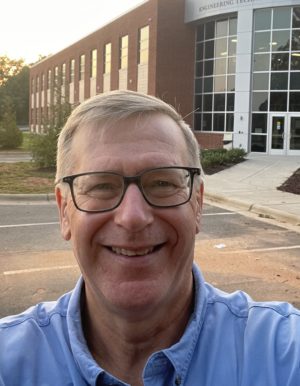
By Jim Cencula
You don’t need to be a climate scientist to know that transitioning global energy production largely to clean, renewable sources is key to reducing the greenhouse gas emissions that are the root cause of climate change. But we do need a highly trained technical workforce to make this energy transition happen effectively. That workforce includes engineers, certainly, but equally important are those with associate degrees or other skills.
The fast-growing wind power industry, where I spent six and half years, and the solar power sector require technicians with good working knowledge of hydraulics, pneumatics, electrical and mechanical systems, and equipment. These roles also demand very good understanding of safety awareness and processes, computer interfaces, product controls, quality practices, and documentation.
Meeting the soaring demand for these skilled technical personnel presents a huge opportunity for next generation workers, and a significant hurdle for those trying to recruit diverse talent to fill these vitally important roles.
The opportunity is huge. Today, renewables are the fastest-growing energy source in the United States, increasing 42 percent from 2010 to 2020 and up 90 percent from 2000 to 2020. As of last year, renewables made up 29 percent of global electricity generation, but only 20 percent of U.S. output. The biggest share of that output is wind power, representing just over 8 percent of total U.S. electricity production, according to the non-profit Center for Climate and Energy Solutions, followed by hydropower (7.3 percent) and solar (3.3 percent). The U.S. onshore wind business is projected to grow to some 25 GW by 2025 and the emerging U.S. offshore wind market is targeted to grow to 30 GW by the early 2030s, reaching approximately 40 percent of total U.S. energy production by 2040.
Meeting the soaring demand for skilled technical personnel in wind, solar, and other fields presents a huge opportunity for young workers.
This growth is translating to good jobs. According to Forbes magazine, the clean energy jobs offer higher wages than the national average and many are widely available to workers without four-year degrees. Indeed, the Brookings Institution estimates that 45 percent of all clean energy workers have no more than a high school diploma yet earn from 8 percent to 19 percent more than their similarly educated peers in other industries. Wind turbine technician and solar photovoltaic installer jobs are forecast by the U.S. Bureau of Labor Statistics to grow 68 percent and 52 percent, respectively, through 2030, making them two of the top five fastest-growing occupations.
After retiring from GE Renewable Energy in 2021, I followed another passion to pass on my experience through training students at a community college. The more than 1,000 community colleges across the U.S. are ideally suited to meet the demand not only for skilled technical workers, but also the national imperative to create a more diverse, equitable, and inclusive technical workforce.
Community and technical colleges are 100 percent focused on integrating working knowledge and skills to meet the specific and rapidly changing needs of the technical job market. Technical training certificates and two-year degrees fill a specialized skills gap not available in most high schools or four-year degree programs. In fact, many in-demand skills in mechatronics, robotics, electronics, and mechanics and some certificate programs such as crane operator, machinist, and welder are only available through technical or community college programs.
The need for skilled training resources is apparent, but neither the academic community nor business can meet this need alone. Both lack the resources to build and scale the required training infrastructure.
They can do it together, however, through partnerships among industry, community colleges, and tech schools, and with the help of novel programs like ASME’s Community College Engineering Pathways initiative, which seeks to strengthen networks between industry and community colleges and expand employment opportunities for diverse students with two-year degrees and other certifications.
The need to transition to renewable energy sources is urgent. So too is the need for a dedicated partnership among industry, educators, and organizations like ASME, to train the next generation of skilled technical workers to build our clean energy future.
Jim Cencula is an Adjunct Faculty Instructor at Isothermal Community College in North Carolina and is a retired Wind Drivetrain Senior Manager with GE Renewable Energy. ASME’s workforce development and sustainability initiatives are funded through donations to the ASME Foundation. Find out more at www.asmefoundation.org.